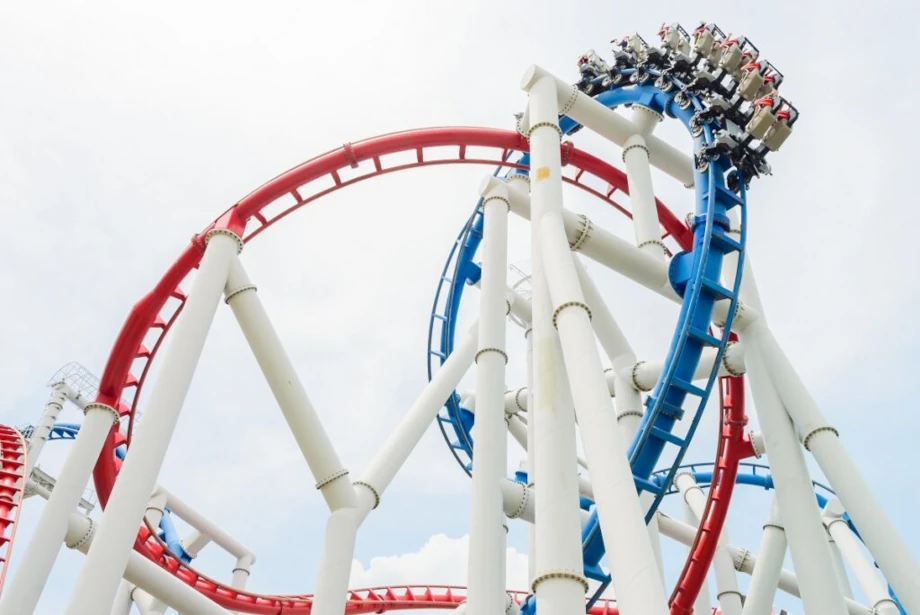It will be trivial to say that all of us have better and worse days. Even healthy people find that they have productive, creative days and days when they only dream about rest and feel down. For most of us it is quite a normal occurrence, and there is no big difference between good days and bad days. However, in people affected by bipolar disorder,it can lead to deep disturbance in behaviour or mental state. Those people describe their mental state as ‘ups’ and ‘downs’. This disease is characterised by episodes of deep depression and deep excitement – mania or hypomania.
What is the affect and what is meant by bipolar disorder?
The name itself can cause some difficulties in understanding this illness. Affect is described in psychology and psychiatry as expression of emotions. Bipolarity relates to the fact that people affected by this illness apart from depressive episodes, experience episodes of mania, which are considerably different to depression. To compare – depressive disorders are sometimes defined as unipolar affective disorder – usually when classic symptoms of depression appear, such as low mood, loss of joy of life or sleep disturbances.
What are the causes of bipolar affective disorder?
Bipolar affective disorder occurs relatively often and affects even 1 in 50 people. Women and Men are diagnosed equally often. Researchers have proven that genetic component plays an important part in the development of the illness. Bipolar affective disorderis considered as one of the most hereditary mental illnesses. Changes in structure of the brain have also been noticed, such as smaller capacity of the frontal cortex,and often occurring decrease of the amygdala. Moreover, this leads to excessive activity of the dopaminergic and noradrenergic systems. It has also been shown that experiencing a very stressful situation, such as death of loved one, job loss or serious illness can lead to affective bi-polar affective disorder emerging. It is worth noting that first symptoms of this illness usually surface before the age of 30.
Two main types of bipolar affective disorder
Specialist literature usually shows two types of the illness:
- type 1 – classic, with occurrence of at least 1 episode of mania,
- type 2 – the patient has more depressive episodes, where usually hypomania occurs.
What is mania?
Mania is a state in which psychomotor agitation occurs. A person in a state of mania usually experiences rapid, multitude of thoughts, andis frequently oversensitive or just the opposite – unnaturally friendly. An important characteristicis also excessive, unnatural talkativeness, reduced need of sleep and noticeable sexual loosening. Risk assessing is not functioning well and people with mania often make irresponsible decisions. Examples of such decisions arelarge, unnecessary purchases connected with borrowing money, resigning from work or even violating the law. A person experiencingan episode of mania has also inflated self-worthand changes plans often and easily.

What kind of depression occurs in bipolar affective disorder?
Depression in bipolar affective disorder resembles ‘ordinary’ depression, however, there are some characteristics, which indicatethe fact, its origin is in bipolar affective disorder. Depression in bipolar affective disorder has more tendency to recur, itis characterised also by increased drowsiness and irritability. Suicide in the family is also animportant diagnostic marker, as well asfastsubsiding of depressive episode.
How to treat bipolar affective disorder?
Bipolar affective disease is popularly regarded as a constant rollercoaster. Moreover, different works of culture depict people affected by this illness as untrustworthy, unpredictable or even dangerous. These are harmful and dangerous prejudices. The patients return to normal life ifdiagnostic processis carried out appropriately, using pharmacotherapy and psychotherapy with psychoeducation. One needs to remember that appropriately used medication and therapy decrease the risk of occurrence of subsequent episodes of mania and depression. If you notice you have symptoms of depressionand you remember the situationwhen you were significantly agitated, or irritated, it is worth consulting with a doctor or psychiatrist. The doctor or psychiatrist will collect a detailed medical history, which will help them to make a correct diagnosis and suggest appropriate treatment. Do not ignore potential symptoms, as bi-polar affective disordergoes hand in hand with significantly increased risk of suicide and death due cardiovascular causes.




